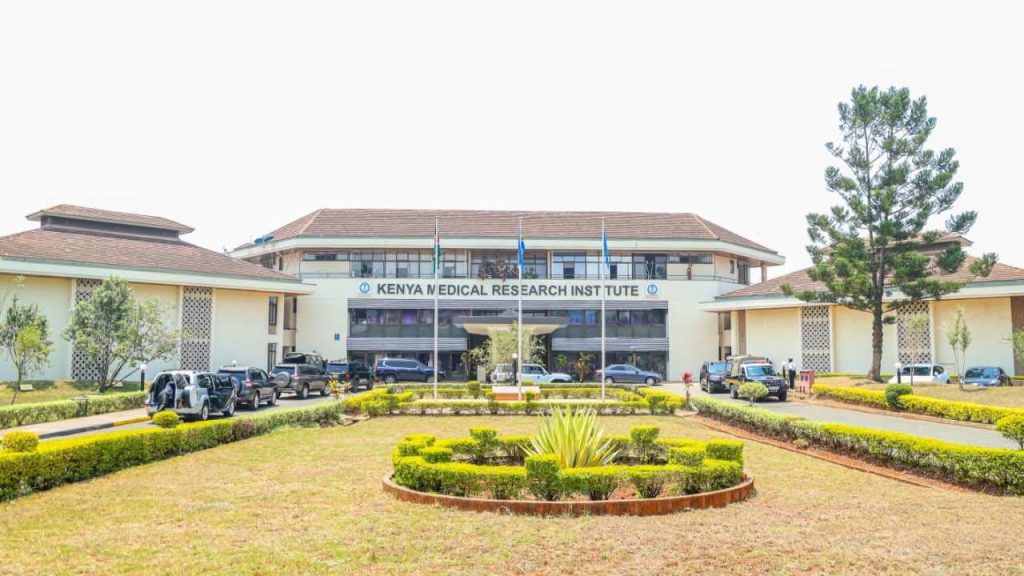Table of Contents
KEMRI’s newly inaugurated expanded polio laboratory marks a defining moment in Kenya’s journey toward health sovereignty, resilience and leadership in Africa’s fight against infectious diseases.
The state-of-the-art facility, inaugurated on 16 September 2025, is valued at USD 480,000 was built with the support of the WHO and funding by the Bill and Melinda Gates Foundation
For decades, African nations have struggled with the painful irony of being epicenters of outbreaks while relying on laboratories thousands of miles away. Until recently, Kenya had to send poliovirus samples as far as South Africa or even the United States for sequencing. This resulted in long delays, which not only hampered the country’s ability to respond to disease outbreaks on time. Thankfully, this era is coming to an end.
Infrastructure Without Sustained Support
A sobering truth must be acknowledged: laboratories are only as effective as the systems that sustain them. Investments in infrastructure must be matched with investments in skilled personnel, consistent funding and political will.
While the inauguration of the new polio laboratory is a milestone, it also comes at a time when KEMRI itself is grappling with funding cuts. Earlier this year, the government slashed allocations for research, leaving critical programmes at risk of stalling. This paradox reminds us that state-of-the-art infrastructure alone is not enough; without sustained investment, even the most advanced laboratories risk becoming hollow shells. To secure Kenya’s health future, the political will to fund science must match the ambition of building it.

Research Under Threat
In the 2025/26 financial year, Kenya’s health research sector faced some of its harshest budgetary setbacks in recent history. The Kenya Medical Research Institute (KEMRI), the country’s flagship health research body, was allocated KSh2.7 billion for recurrent expenditure mainly to cover salaries and basic operations
The situation was even worse for the National Research Fund (NRF), the statutory body mandated to finance research and innovation across all sectors. In 2024/25, NRF had been allocated KSh 218.7 million, but in 2025/26, it received no funding. This has left many ongoing projects stranded and raised fears about Kenya’s ability to sustain homegrown innovation.
These cuts come at a time when international donors such as USAID have also withdrawn significant funding over $220 million earmarked for health research, further compounding the crisis. Experts warn that the result will be stalled clinical trials, weakened disease surveillance systems, and the migration of top Kenyan scientists to countries with stronger research support.
Towards sustainability
Prioritizing procurement of locally developed health innovations would mean that lifesaving diagnostics, vaccines, and treatments designed in Kenya could actually reach hospitals and communities instead of being sidelined in favor of imported products. It would encourage a cycle where Kenyan research directly benefits Kenyan citizens, while also strengthening the local economy through job creation and reduced dependence on costly imports.
A review of the Science, Technology, and Innovation (STI) Act, 2013, to allow institutions like KEMRI and the NRF to commercialize their products would be equally transformative. It would give researchers a pathway to patent and scale their discoveries, generating sustainable revenue for reinvestment in science. Over time, Kenya could shift from being a consumer of foreign technologies to becoming a regional hub for homegrown solutions exporting diagnostics, vaccines, and innovations designed specifically for African health realities.
The government should approve KEMRI’s proposal to allocate at least 0.1 percent of the Sh7 billion collected monthly by the Social Health Authority for research. Such a commitment would provide Kenya’s scientists with a dependable source of domestic funding, insulating critical research from the uncertainty of donor cycles and shifting political priorities. More importantly, it would be a powerful signal that the country is ready to invest in its own innovators.
By Ruth Gachau




